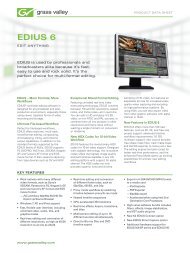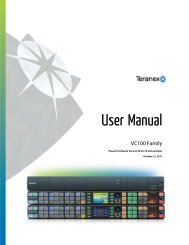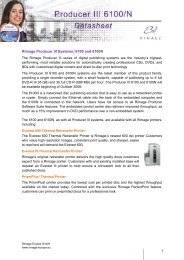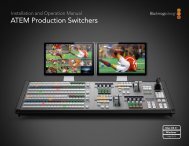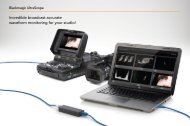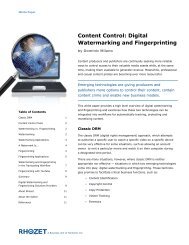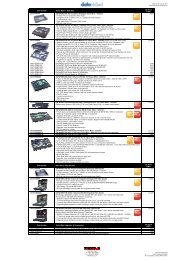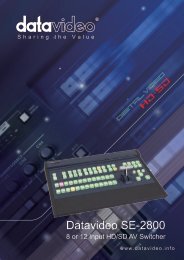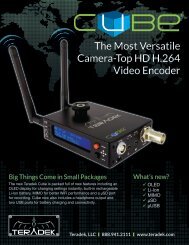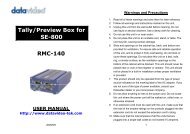Manual - Holdan.eu
Manual - Holdan.eu
Manual - Holdan.eu
You also want an ePaper? Increase the reach of your titles
YUMPU automatically turns print PDFs into web optimized ePapers that Google loves.
12.0 EDGE-BLENDING SETUP<br />
12.1 Introduction<br />
Edge-blending is a method whereby two or more video/data projectors are<br />
used together with part of their images overlapping, thereby creating a wider<br />
(or taller) display more suitable for showing wide-screen video images. The<br />
term edge-blending relates to the fact that the overlap needs to be carefully<br />
handled to prevent the overlap causing image brightness problems.<br />
This guide is intended to summarise how to setup such projectors when used<br />
with a suitable number of TV One’s CORIO®2 scaling engines. The C2-7000<br />
series are dual processors and therefore require only a single unit to perform<br />
both tasks, whereas other units will generally require two units to be used<br />
together, with a distribution amplifier on the input so that both units receive an<br />
identical video source.<br />
Image 1 Image 2<br />
Basic method of overlapping two projection images to create a larger one.<br />
Because the two overlapping areas will create a brighter than normal image,<br />
‘blending’ is performed on the edges to allow seamless merging of the images<br />
together. The ‘blend’ is basically an S-shaped curve that is applied to<br />
gradually reduce the brightness of the image at the edge, so that they can<br />
overlap properly:




